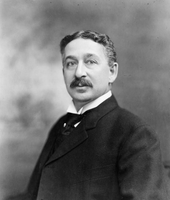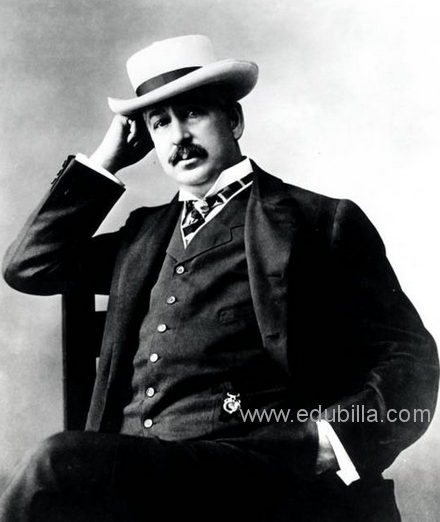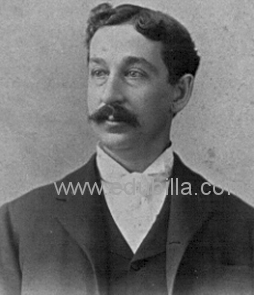










King Camp Gillette was an American businessman. He invented a best selling version of the safety razor.Several models were in existence before Gillette's design. Gillette's innovation was the thin, inexpensive, disposable blade of stamped steel.Gillette is widely credited with inventing the so-called razor and blades business model, where razors are sold cheaply to increase the market for blades,but in fact he only adopted this model after his competitors did.
Early Life
His Yankee ancestors came from England to Massachusetts in 1630. He was born on January 5, 1855 in Fond du Lac, Wisconsin and raised in Chicago, Illinois.His family survived the Great Chicago Fire of 1871.
While working as a salesman for the Crown Cork and Seal Company in the 1890s, Gillette saw bottle caps, with the cork seal he sold, thrown away after the bottle was opened. This made him recognize the value in basing a business on a product that was used a few times, then discarded. Men shaved with straight razors that needed sharpening every day using a leather strop. As existing, relatively expensive, razor blades dulled quickly and needed continuous sharpening, a razor whose blade could be thrown away when it dulled would meet a real need and likely be profitable.
Safety razors had been developed in the mid-19th century, but still used a forged blade. In the 1870s, the Kampfe Brothers introduced a type of razor along these lines.Gillette improved these earlier safety-razor designs, and introduced the high-profit-margin stamped razor blade steel blade. Gillette's razor retailed for a substantial $5 (about $140 in 2014 dollars) — half the average working man's weekly pay — yet sold by the millions.
The most difficult part of development was engineering the blades, as thin, cheap steel was difficult to work and sharpen. This accounts for the delay between the initial idea and the product's introduction. Steven Porter, a machinist working with Gillette, used Gillette's drawings to create the first disposable razor that worked. William Emery Nickerson, an expert machinist and partner of Gillette, changed the original model, improving the handle and frame so that it could better support the thin steel blade. Nickerson designed the machinery to mass-produce the blades.
To sell the product, Gillette founded the American Safety Razor Company on September 28, 1901 (changing the company's name to Gillette Safety Razor Company in July 1902). Gillette obtained a trademark registration (0056921) for his portrait and signature on the packaging. Production began in 1903, when he sold a total of 51 razors and 168 blades.
The second year, he sold 90,884 razors and 123,648 blades,thanks in part to Gillette's low prices, automated manufacturing techniques and good advertising. Sales and distribution were handled by a separate company, Townsend and Hunt, which was absorbed by the parent company for $300,000 in 1906. By 1908, the corporation had established manufacturing facilities in the United States, Canada, Britain, France and Germany. Razor sales reached 450,000 units and blade sales exceeded 70 million units in 1915. In 1918, when the U.S. entered World War I, the company provided all American soldiers with a field razor set, paid for by the government. Gillette vetoed a plan to sell the patent rights in Europe, believing correctly that Europe would eventually provide a very large market. Gillette and a fellow director John Joyce, battled for control of the company. Gillette eventually sold out to Joyce, but his name remained on the brand. In the 1920s, as the patent expired, the Gillette Safety Razor Company emphasized research to design ever improved models, realizing that even a slight improvement would induce men to adopt it.
He was almost bankrupt from spending large amounts of money on property, and to his having lost much of the value of his corporate shares as a result of the Great Depression.
Gillette died on July 9, 1932 in Los Angeles, California.He was interred in the lower levels of the Begonia Corridor in the Great Mausoleum located at Forest Lawn Memorial Park Cemetery in Glendale, California.

